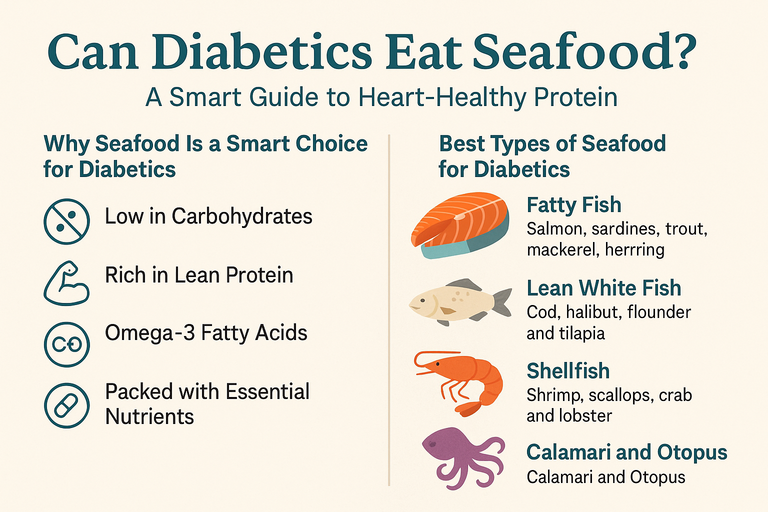Seafood is generally an excellent dietary choice for individuals managing diabetes due to its favorable nutritional profile.

Key Nutritional Advantages
- Lean Protein: Seafood is a prime source of high-quality protein. Protein helps stabilize blood sugar levels by slowing down the absorption of glucose and promoting a feeling of fullness, which can aid in overall calorie management.
- Omega-3 Fatty Acids: Many types of fish, particularly fatty fish like salmon, mackerel, herring, and sardines, are rich in omega-3 fatty acids (EPA and DHA). These healthy fats are known for their cardiovascular benefits, including reducing inflammation, lowering triglyceride levels, and potentially improving insulin sensitivity. Given that diabetes increases the risk of heart disease, omega-3s are particularly beneficial.
- Low in Carbohydrates: Most fish and shellfish contain minimal to no carbohydrates, meaning they do not directly cause a significant rise in blood glucose levels.
- Essential Vitamins and Minerals: Seafood is a good source of vitamin D and selenium. Some studies suggest vitamin D may play a role in improving insulin sensitivity, while selenium is an antioxidant that supports overall health.
Best Choices and Considerations
While seafood is beneficial, how it’s chosen and prepared matters significantly:
- Prioritize Healthy Cooking Methods: Opt for baking, grilling, broiling, steaming, or poaching. Avoid fried seafood or dishes with heavy, creamy, or sugary sauces, as these add unhealthy fats, calories, and carbohydrates.
- Mind Mercury Levels: While the benefits often outweigh the risks, it’s wise to choose fish lower in mercury. Excellent low-mercury, high-omega-3 options include salmon, sardines, and trout. Limit consumption of high-mercury fish such as shark, swordfish, king mackerel, and tilefish.
- Shellfish: Shellfish like shrimp and crab can be part of a diabetes-friendly diet. While some are higher in dietary cholesterol, they are low in saturated fat, which has a more significant impact on blood cholesterol levels. They are also good sources of protein.
- Portion Control: Adhere to recommended portion sizes as part of a balanced meal plan. A typical serving of fish is around 3-4 ounces (85-113 grams).
Recommended Seafood for Diabetics
Focus on these types for optimal benefits:
- Salmon (wild-caught preferred for higher omega-3s)
- Mackerel (Atlantic or Pacific)
- Sardines (canned in water or olive oil)
- Herring
- Trout (Rainbow)
- Cod
- Tilapia
- Shrimp
- Scallops
- Light tuna (canned in water)
In conclusion, regular consumption of appropriately prepared seafood can be a valuable component of a healthy eating plan for managing diabetes. It supports blood sugar control, cardiovascular health, and provides essential nutrients. Always discuss significant dietary changes with your healthcare provider or a registered dietitian to ensure they align with your individual health needs and treatment plan.






